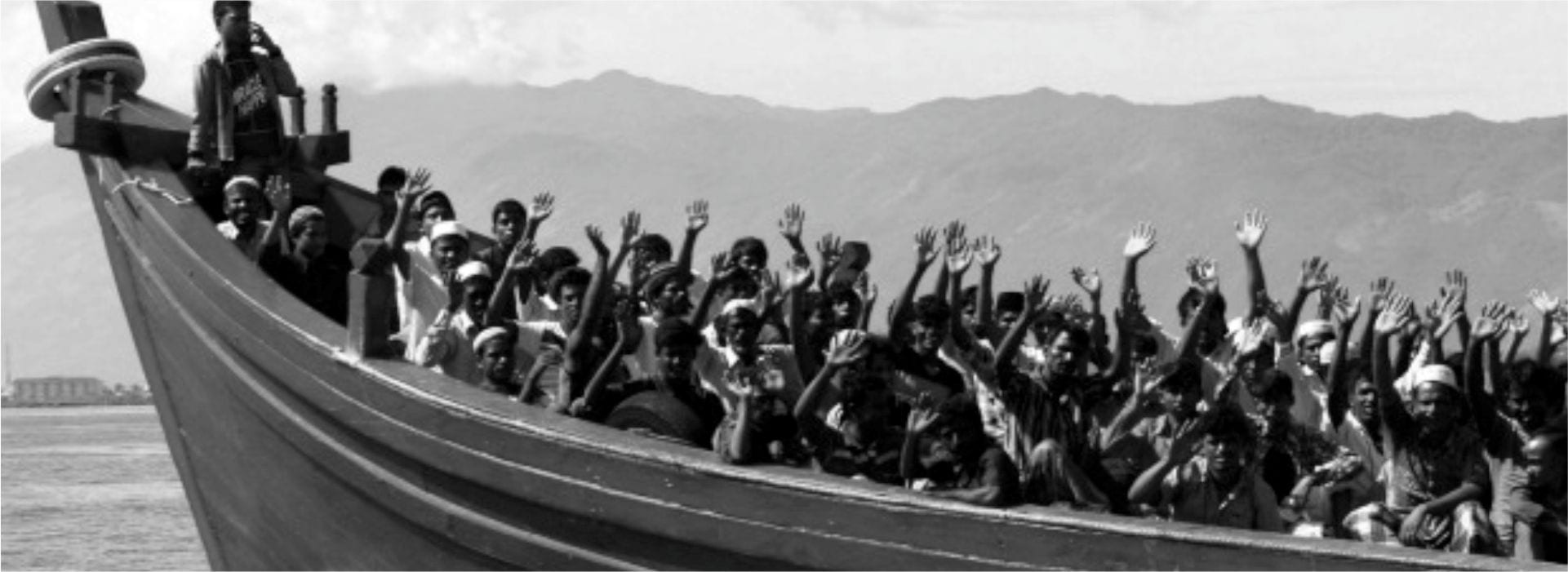Can the Subaltern Speak in ASEAN?

Ethnic Rohingya refugees from Myanmar are transported to a temporary shelter in Krueng Raya in Aceh Besar in 2013. Photo: Reuters
Ahmad Rizky M Umar, Postgraduate Student at Department of Politics, University of Sheffield and formerly a Research Assistant at ASEAN Studies Centre, Universitas Gadjah Mada
Can the subaltern speak? Gayatri Chakravorty Spivak, a prominent postcolonial and Indian scholar, raised this question in her popular article (1985). She attempted to draw an analysis of the subaltern, those who were excluded from existing power-relations and thus unable to speak of themselves.
Drawing an analysis through the lens of postcolonial India, Spivak concerned with how the ‘elite’, ‘intellectuals’, and other kind of people in power has failed to make the subaltern speak of themselves. Rather than make the subaltern speaks, intellectuals has attempted to speak about the subaltern as if they were subaltern themselves.
This creates something like ‘camera obscura’ –to quote Marx— in seeing the subaltern. There were some biases over the construction of subaltern in dominant view. This view has made a subordinate relation between the Colonizers and the Colony. When the Colony has been proclaimed independent, this colonial view has been preserved. In many postcolonial states, including those in Southeast Asia, it is somehow believed that only ‘elite’ or ‘intellectuals’ –those who are educated in modern system— are legitimate to speak representing the country, and thus speak of the ‘subaltern’ in their countries.
Against this backdrop, we can raise the same question: can the Subaltern speak in Southeast Asia, where ten states have been agreed to form a new regional community –namely Association of Southeast Asian Nations (ASEAN)— to maintain peace and stability in the region?
ASEAN was formed in 1967 in a meeting of 5 leading states in Southeast Asia: Indonesia, Malaysia, Thailand, Singapore, and Phillippines. Its primary objective was actually simple: to maintain peace and security in the region. Those states have agreed to take ‘non-intervention’ position to reach that goal. At the end of the Cold War, its membership was expanded to five other states: Myanmar, Laos, Brunei, Cambodia, and Vietnam.
It is important to take a look at the region’s historical conjuncture. Before 1945, Southeast Asia has been divided by four big colonial states –Spain (Phillippines), Dutch (Indonesia), British (Singapore, Malaysia, and Brunei), and French (Indochina States). Thailand becomes the only state that is free from colonialism –it was becoming a boundary that separated British and French.
Given such a context, politically. geographical construction of Southeast Asia is thus a colonial construction. Indonesia could only be a united nation-state when the Dutch, with its ‘ethical politics’, allowing the Indonesians to get some educations and subsequently awaken nationalism in Indonesian pribumi.
The Malay identity, which is central in the sovereign state of Malaysia, is also in fact British-constructed. The Malaysian state was inherited by British Colonial Sdministrations that had been in power since the 19th century. French colonialism in Indochina divided the region in some ethnic-based countries.
In this context, Southeast Asian identity should be traced in its colonial origins. We cannot simply identify Southeast Asia merely on its existing state –since it has been constructed by the colonizers. We have to critically re-identify Southeast Asia by acknowledging the ‘subaltern’ –those who are marginalized due to their few numbers or apolitical positions.
Nowadays, several ‘subaltern’ communities exist in Southeast Asia. There are some minority ethnic groups such as Papuans in Indonesia, Dayaks in Malaysia, Pattani and Mons in Thailand, or Rohings and Karens in Myanmar.
Many of them have resisted. We have witnessed some groups who are attempting to express their form of resistance through separatism or political insurgency. There are, for example, Komite Nasional Papua Barat in Indonesia or Moro Islamic Liberation Front who have been accused as national threat by each national authority.
In another prominent case, there are Rohing people in Myanmar, who were externally displaced and taken refugees and hence leaving new problems in other Southeast Asian Countries.
These subalterns remain with their own problems in each country. But as we are getting closer with the upcoming ASEAN Community, which is aimed at gathering all Southeast Asian countries to a ‘people-oriented’ regionalism, we have to ask the same question as Spivak did: can those subalterns speak in the upcoming ASEAN Community?
Since its establishment, ASEAN tends to be very state-centric. It has been formed as a place to negotiate state’s interest. There is a weakness in this state-centric tendency: ASEAN only serve as ‘arena of negotiation’ from state’s elite who have been, by Law, acclaimed as representative as the State.
ASEAN governing structure also proves this argument. ASEAN Structure acknowledges the ASEAN Summit as the highest structure that can produce legally-binding decision for each member states. The Summit is obviously attended only by State’s representatives. It is proven to be very elitist, and thus left not enough room for the subalterns to speak of themselves in front of ASEAN People.
Thus, instead of giving rooms for the subaltern to speak, the ASEAN State’s representatives seem to acclaim themselves as the representation of the Subalterns, which was rarely discussed in the Summit.
Indeed, it is very problematic. ASEAN has been entrapped by its ‘colonial legacy’ which perceives the state as the only subject who can speak and articulates their interests in political arena. They have repressed voices of the Subaltern in the making of ASEAN –which only makes the ASEAN States as the reincarnation of the colonizers in Southeast Asian skin.
Thus, it is therefore important for the ASEAN State’s representatives, who will be representing their states in the upcoming ASEAN Summit, to reflect its nature of regionalism. If the upcoming ASEAN Summit can’t address this problem, it is likely that the idea of ‘ASEAN Community’ has not yet ready to be faced by both people and the state.



